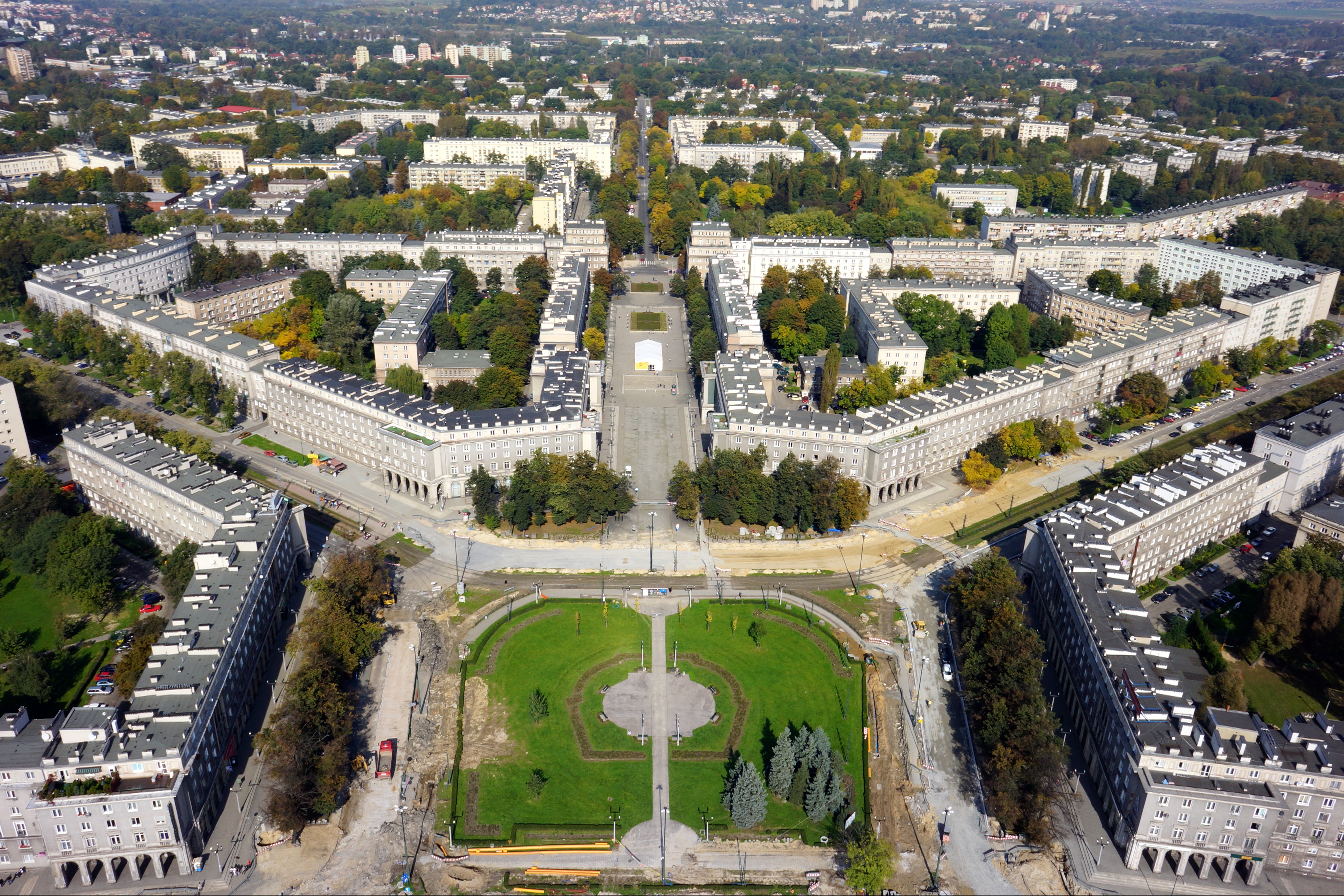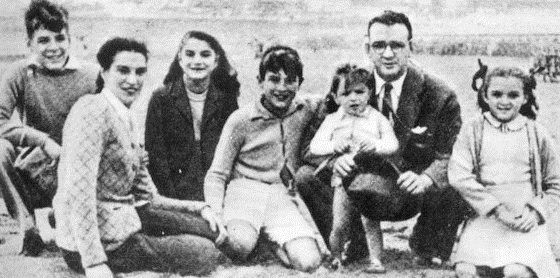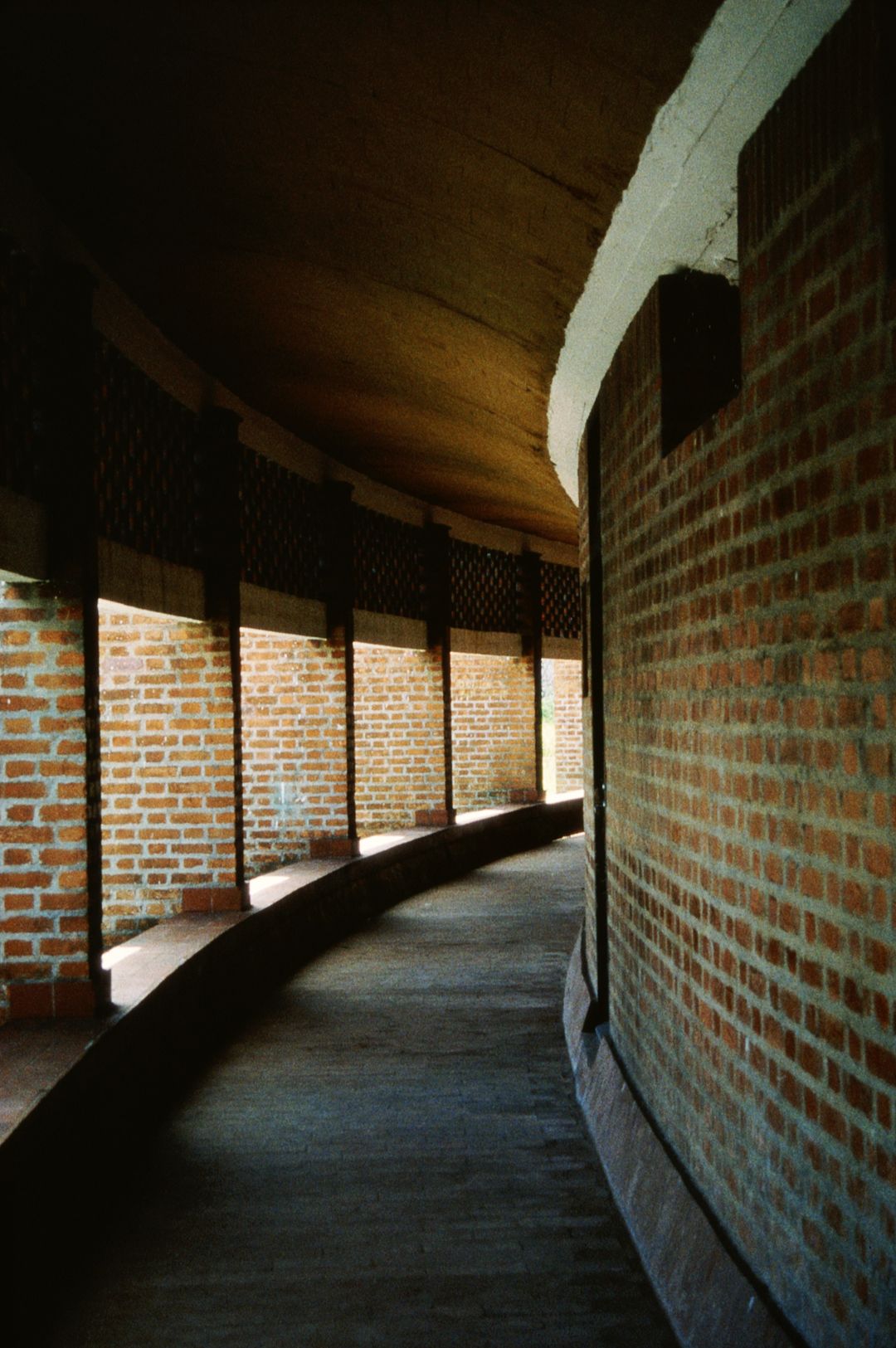|
Vittorio Garatti
Vittorio Garatti (6 April 1927 – 12 January 2023) was an Italian architect. Biography Garatti was born in Milan on 6 April 1927. He graduated in architecture in 1957 from the Politecnico di Milano, where Ernesto Nathan Rogers was a major influence. Guido Canella and Gae Aulenti were his classmates. The Venezuelan experience In that same year, Garatti departed for Venezuela, where he found employment in the ''Banco Obrero'' project led by architect Carlos Raúl Villanueva, and began teaching at the Central University of Venezuela, University in Caracas. Garatti, like fellow architect and ''Banco Obrero'' project mate Roberto Gottardi, had been a young participant in the post-war debate in Italy against Rationalism (architecture), Rationalism, a critique that was led by such figures as Ernesto Nathan Rogers, Carlo Scarpa, Mario Ridolfi, Giuseppe Samonà and Bruno Zevi. The Cuban experience Following the victory of the Cuban Revolution, Cuban-born architect (and ''Banco Obr ... [...More Info...] [...Related Items...] OR: [Wikipedia] [Google] [Baidu] |
Vittorio Garatti, School Of Ballet, Escuelas Nacional De Arte (1961-65)
Vittorio is an Italian male given name which has roots from the Byzantine-Bulgarian name Victor (name), Victor. People with the given name Vittorio include: * Vittorio Emanuele, Prince of Naples, pretender to the former Kingdom of Italy * Vittorio Adorni, professional road racing cyclist * Vittorio Alfieri, dramatist and poet * Vittorio Amandola (1952–2010), Italian actor and voice actor * Vittorio De Angelis (1962–2015), Italian voice actor * Vittorio Brambilla (1937–2001) Italian Formula One racing driver * Vittorio Caprioli, actor, director and screenwriter * Vittorio Cecchi Gori (born 1942), Italian film producer and politician * Vittorio Cini (1885–1977), Italian industrialist and politician * Vittorio Cottafavi, director and screenwriter * Vittorio Gallinari, basketball player * Vittorio Gassman (1922–2000), Italian actor and director * Vittorio Giannini, neoromantic composer of operas * Vittorio Guerrieri, Italian voice actor * Vittorio Giardino, comic artist * ... [...More Info...] [...Related Items...] OR: [Wikipedia] [Google] [Baidu] |
Bruno Zevi
Bruno Zevi (22 January 1918 – 9 January 2000) was an Italian architect, historian, professor, curator, author, and editor. Zevi was a vocal critic of "classicizing" modern architecture and postmodernism. Early life Zevi was born and died in Rome. His family was Italian Jewish. On finishing school in 1933, he enrolled at the Faculty of Architecture at the University of Rome. Due to the anti-Semitic laws, Zevi was forced in 1938 to abandon his studies, and so left for London, UK, before moving to the United States. Zevi graduated from the Harvard Graduate School of Design, then under the directorship of Walter Gropius. In 1940 he married Italian journalist and writer Tullia Calabi. While in the US he discovered the work of Frank Lloyd Wright, which became one of the bases for his championing of organic architecture. Zevi returned to London in 1943, working as a translator in the war effort. Association for Organic Architecture In 1944, he founded the influential Associat ... [...More Info...] [...Related Items...] OR: [Wikipedia] [Google] [Baidu] |
Unfinished Spaces
''Unfinished Spaces'' is a 2011 documentary film about the revolutionary design of the National Art Schools (Cuba), directed by Alysa Nahmias and Benjamin Murray. The film tells the dramatic story of the art schools from their founding by Fidel Castro and Che Guevara to their eventual abandonment and fall into ruin and recent efforts to restore them. The three visionary architects Ricardo Porro, Roberto Gottardi, and Vittorio Garatti are interviewed on camera. They talk about the intense atmosphere of revolutionary Cuba and how they strove to create an entirely new language of architecture, one without precedent. They also speak about why their design fell into disfavor and how the complex was mostly abandoned, uncompleted. As the film shows, parts of the schools are in ruins while other parts are used today by young dancers and artists. These schools are on the watch list of the World Monuments Fund, and efforts to restore the abandoned buildings are being explored. ''Unfinishe ... [...More Info...] [...Related Items...] OR: [Wikipedia] [Google] [Baidu] |
UNESCO
The United Nations Educational, Scientific and Cultural Organization is a specialized agency of the United Nations (UN) aimed at promoting world peace and security through international cooperation in education, arts, sciences and culture. It has 193 member states and 12 associate members, as well as partners in the non-governmental, intergovernmental and private sector. Headquartered at the World Heritage Centre in Paris, France, UNESCO has 53 regional field offices and 199 national commissions that facilitate its global mandate. UNESCO was founded in 1945 as the successor to the League of Nations's International Committee on Intellectual Cooperation.English summary). Its constitution establishes the agency's goals, governing structure, and operating framework. UNESCO's founding mission, which was shaped by the Second World War, is to advance peace, sustainable development and human rights by facilitating collaboration and dialogue among nations. It pursues this objective t ... [...More Info...] [...Related Items...] OR: [Wikipedia] [Google] [Baidu] |
City College Of New York
The City College of the City University of New York (also known as the City College of New York, or simply City College or CCNY) is a public university within the City University of New York (CUNY) system in New York City. Founded in 1847, City College was the first free public institution of higher education in the United States. It is the oldest of CUNY's 25 institutions of higher learning, and is considered its flagship college. Located in Hamilton Heights overlooking Harlem in Manhattan, City College's 35-acre (14 ha) Collegiate Gothic campus spans Convent Avenue from 130th to 141st Streets. It was initially designed by renowned architect George B. Post, and many of its buildings have achieved landmark status. The college has graduated ten Nobel Prize winners, one Fields Medalist, one Turing Award winner, three Pulitzer Prize winners, and three Rhodes Scholars. Among these alumni, the latest is a Bronx native, John O'Keefe (2014 Nobel Prize in Medicine). City College' ... [...More Info...] [...Related Items...] OR: [Wikipedia] [Google] [Baidu] |
Loomis School Music
Loomis may refer to: Places Canada *Loomis, Saskatchewan United States *Loomis, California *Loomis, Michigan *Loomis, Nebraska *Loomis, New York, a hamlet in Liberty, New York *Loomis, South Dakota *Loomis, Washington * Loomis, Wisconsin *Loomis Chaffee, a school in Windsor, Connecticut, originally known as The Loomis Institute * Loomis Museum, an historical homestead museum in California *Loomis station, a former train station and mansion in Washington *Loomis station (CTA Englewood branch), a former Chicago 'L' train station Structures *Loomis Homestead, Windsor, Connecticut *Capt. James Loomis House, Windsor, Connecticut * Loomis-Parry Residence, Augusta, Kansas *Fowler-Loomis House, Oswego County, New York *Robert and Mabel Loomis House, Hood River, Oregon People * See Loomis (surname) Television and film The surname Loomis has become something of a trope in horror films, with characters in the Psycho, Halloween, Scream and Dark Shadows films or franchises carrying the name. ... [...More Info...] [...Related Items...] OR: [Wikipedia] [Google] [Baidu] |
Expo 1967
The 1967 International and Universal Exposition, commonly known as Expo 67, was a general exhibition from April 27 to October 29, 1967. It was a category One World's Fair held in Montreal, Quebec, Canada. It is considered to be one of the most successful World's Fairs of the 20th century with the most attendees to that date and 62 nations participating. It also set the single-day attendance record for a world's fair, with 569,500 visitors on its third day. Expo 67 was Canada's main celebration during its Canadian Centennial, centennial year. The fair had been intended to be held in Moscow, to help the Soviet Union celebrate the Russian Revolution of 1917, Russian Revolution's 50th anniversary; however, for various reasons, the Soviets decided to cancel, and Canada was awarded it in late 1962. The project was not well supported in Canada at first. It took the determination of Montreal's mayor, Jean Drapeau, and a new team of managers to guide it past political, physical and tempo ... [...More Info...] [...Related Items...] OR: [Wikipedia] [Google] [Baidu] |
Utopian Architecture
Utopian architecture is architecture inspired by utopianism. Examples for such an architecture are Phalanstère, Arcology and Garden Cities. Earthships are realizations of the utopia of sustainable living and autonomous housing. Also, the concept domed city functions as a potential utopia. Examples Le Corbusier proposed Ville Contemporaine in 1922 as a planned community, which was not realized. In 1930, Nikolay Milyutin published the idea of Sotsgorod, a utopian linear city for socialism. Frank Lloyd Wright presented the idea of an urban or suburban development concept Broadacre City in 1932. From 1927 to 1934, Tresigallo was transformed under the supervision of the Fascist Minister of Agriculture Edmondo Rossoni into a ''utopian city'' by completely rebuilding it. Tomáš Baťa developed the concept of a utopian industrial town in the 1920s and 1930s. It was similar to Fordism, introducing mass production into the area of urban planning. The concept was realized in Zlín. ... [...More Info...] [...Related Items...] OR: [Wikipedia] [Google] [Baidu] |
Cuban Missile Crisis
The Cuban Missile Crisis, also known as the October Crisis (of 1962) ( es, Crisis de Octubre) in Cuba, the Caribbean Crisis () in Russia, or the Missile Scare, was a 35-day (16 October – 20 November 1962) confrontation between the United States and the Soviet Union, which escalated into an international crisis when American deployments of missiles in Italy and Turkey were matched by Soviet deployments of similar ballistic missiles in Cuba. Despite the short time frame, the Cuban Missile Crisis remains a defining moment in national security and nuclear war preparation. The confrontation is often considered the closest the Cold War came to escalating into a full-scale nuclear war. In response to the presence of American Jupiter ballistic missiles in Italy and Turkey, the failed Bay of Pigs Invasion of 1961, and Soviet fears of a Cuban drift towards China, Soviet First Secretary Nikita Khrushchev agreed to Cuba's request to place nuclear missiles on the island to deter a ... [...More Info...] [...Related Items...] OR: [Wikipedia] [Google] [Baidu] |
Che Guevara
Ernesto Che Guevara (; 14 June 1928The date of birth recorded on /upload.wikimedia.org/wikipedia/commons/7/78/Ernesto_Guevara_Acta_de_Nacimiento.jpg his birth certificatewas 14 June 1928, although one tertiary source, (Julia Constenla, quoted by Jon Lee Anderson), asserts that he was actually born on 14 May of that year. Constenla alleges that she was told by Che's mother, Celia de la Serna, that she was already pregnant when she and Ernesto Guevara Lynch were married and that the date on the birth certificate of their son was forged to make it appear that he was born a month later than the actual date to avoid scandal. ( Anderson 1997, pp. 3, 769.) – 9 October 1967) was an Argentine Marxist revolutionary. A major figure of the Cuban Revolution, his stylized visage has become a ubiquitous countercultural symbol of rebellion and global insignia in popular culture. As a young medical student, Guevara traveled throughout South America and was radicalized by the poverty, hunger, ... [...More Info...] [...Related Items...] OR: [Wikipedia] [Google] [Baidu] |
Fidel Castro
Fidel Alejandro Castro Ruz (; ; 13 August 1926 – 25 November 2016) was a Cuban revolutionary and politician who was the leader of Cuba from 1959 to 2008, serving as the prime minister of Cuba from 1959 to 1976 and president from 1976 to 2008. Ideologically a Marxist–Leninist and Cuban nationalist, he also served as the first secretary of the Communist Party of Cuba from 1961 until 2011. Under his administration, Cuba became a one-party communist state; industry and business were nationalized, and state socialist reforms were implemented throughout society. Born in Birán, the son of a wealthy Spanish farmer, Castro adopted leftist and anti-imperialist ideas while studying law at the University of Havana. After participating in rebellions against right-wing governments in the Dominican Republic and Colombia, he planned the overthrow of Cuban President Fulgencio Batista, launching a failed attack on the Moncada Barracks in 1953. After a year's imprisonment, Castro travel ... [...More Info...] [...Related Items...] OR: [Wikipedia] [Google] [Baidu] |
National Schools Of Art, Havana
The National Art Schools (Escuelas Nacionales de Arte) of Cuba is one of the most important educational institutions of the Cuban nation and has been declared as "National Monument". Cuba's National Art Schools (Escuelas Nacionales de Arte, now known as the Instituto Superior de Arte) are considered by historians to be among the most outstanding architectural achievements of the Cuban Revolution. These innovative, organic Catalan-vaulted brick and terra-cotta structures were built on the site of a former country club in the far western Havana suburb of Cubanacán, which was once considered to be Havana's "Beverly Hills", and was then mainly reserved for Communist Party officials. The schools were conceived and founded by Fidel Castro and Che Guevara in 1961, and they reflect the utopian optimism and revolutionary exuberance of the early years of the Cuban Revolution. Over their years of active use, the schools served as the primary incubator for Cuba's artists, musicians, actors ... [...More Info...] [...Related Items...] OR: [Wikipedia] [Google] [Baidu] |
.jpg)




